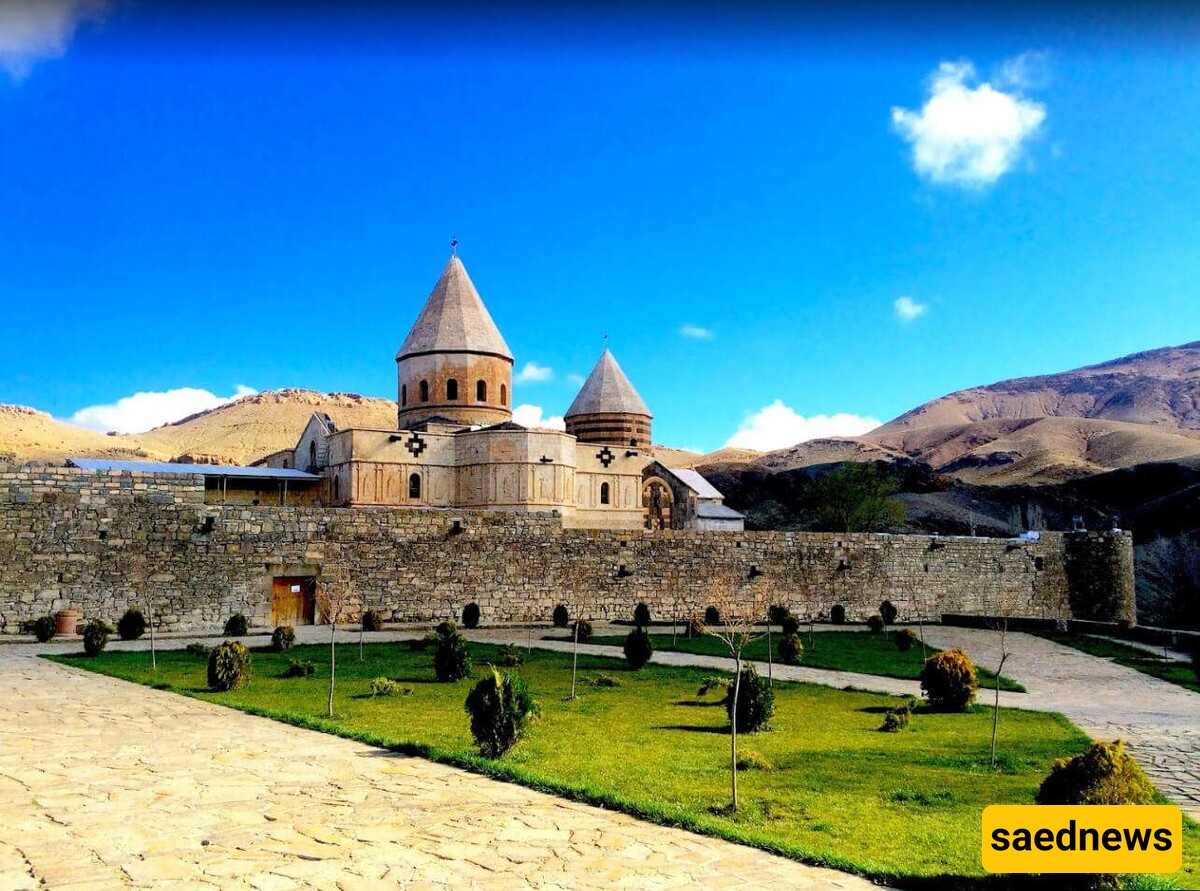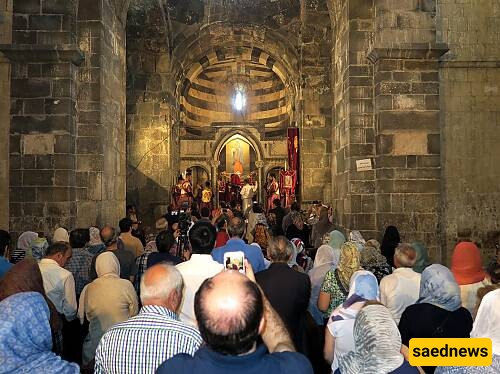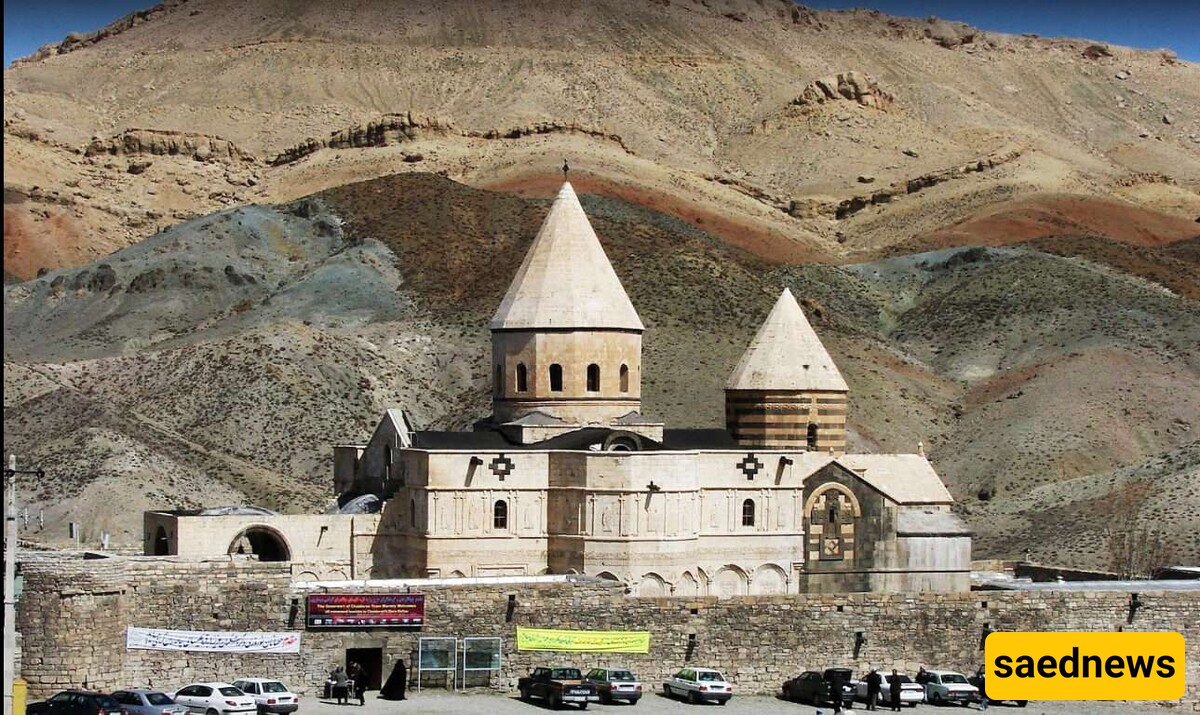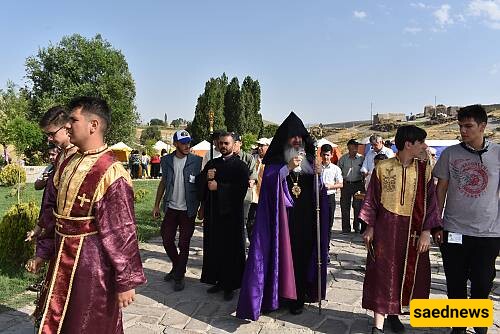SAEDNEWS: The annual St. Thaddeus Pilgrimage draws thousands of Armenian Christians and other worshippers to the revered St. Thaddeus Monastery in northwestern Iran. This sacred journey not only honors St. Thaddeus, one of the first apostles to spread Christianity but also celebrates cultural unity, heritage, and faith

According to SAEDNEWS, for over a thousand years, Armenian Christians have journeyed to the St. Thaddeus Monastery in Iran’s West Azerbaijan Province to honor the memory of St. Thaddeus, one of Jesus Christ’s earliest apostles.

This annual pilgrimage, held during the last weekend of July, is one of the most important events for the Armenian Christian community, with believers gathering from as far away as Armenia, Russia, and Europe. Here, they find a connection to their ancestors and honor a deep-rooted tradition that reinforces faith and cultural identity.
The pilgrimage centers on the St. Thaddeus Monastery, known locally as Qara Kelisa, or "The Black Church," due to its distinctive dark basalt stone. The church, a UNESCO World Heritage site, is believed to be one of the oldest Christian churches in existence, with its roots going back to the 4th century. Legend holds that St. Thaddeus introduced Christianity to Armenia, making this site a profound symbol of devotion for Armenians worldwide. Despite its remote location, the monastery stands as a beacon of resilience and faith for all who come to visit.


Over the course of three days, pilgrims participate in a rich tapestry of rituals and ceremonies that honor the life and sacrifice of St. Thaddeus. The observances begin with a solemn Holy Mass, led by Armenian clergy from across Iran and other countries, who deliver blessings, conduct baptisms, and offer prayers for the community. These services serve as a focal point, bringing the congregation together in a powerful display of shared faith and dedication.
Beyond the religious rites, the pilgrimage is a time of joy and festivity. Families camp around the monastery grounds, setting up tents and sharing meals together, turning the experience into a celebration of community as well as worship. Traditional Armenian music, dancing, and shared meals add to the atmosphere, transforming the pilgrimage into a living, breathing festival that balances solemn devotion with cultural celebration. Children are introduced to the faith and history that their ancestors cherished, ensuring that this tradition continues through generations.
The monastery’s architecture is as unique and storied as the pilgrimage itself. Recognized by UNESCO as part of the “Armenian Monastic Ensembles of Iran” in 2008, Qara Kelisa blends architectural influences from Persian and Armenian traditions, featuring dark stone walls, intricate carvings, and towers that have been restored and preserved over the centuries. The monastery stands as a testament to the resilience and rich heritage of the Armenian community in Iran, embodying a cultural fusion that speaks to centuries of coexistence between Armenians and Persians.
The UNESCO designation has helped bring international attention to the St. Thaddeus Monastery, drawing historians, researchers, and tourists who seek to understand the historical and cultural significance of the site. For those participating in the pilgrimage, however, the monastery is more than a historic landmark; it is a sacred space that represents the endurance of their faith and the strength of their cultural ties.
The pilgrimage to St. Thaddeus Monastery is a tradition that has endured countless challenges, including political changes and the dispersion of Armenian communities. In recent decades, Iran has made strides in preserving Armenian cultural and religious sites, further supporting the annual pilgrimage by ensuring that the monastery and its surrounding areas are well-maintained and accessible. This support allows more pilgrims each year to reconnect with their heritage in this ancient setting.
In modern times, the St. Thaddeus Pilgrimage has become a source of unity and pride not only for Armenians but for all communities who respect and value cultural diversity. It offers a glimpse into Iran’s multicultural history and demonstrates the country’s respect for religious freedom, as the Armenian community and the government collaborate to preserve this rich tradition.
The St. Thaddeus Pilgrimage is a profound expression of faith, tradition, and unity. It is a journey that celebrates the strength of a community and its dedication to keeping the memory of St. Thaddeus alive. As thousands gather each year in this remote corner of Iran, they find both solace and solidarity, ensuring that this ancient custom remains vibrant for generations to come. By honoring their shared past, pilgrims help carry forward a legacy that is as enduring as the stones of Qara Kelisa itself.

